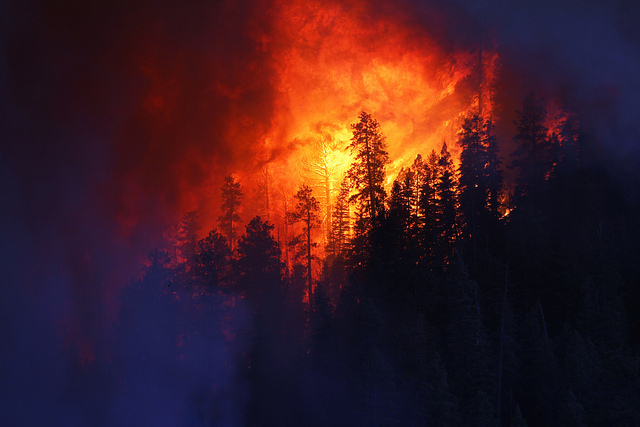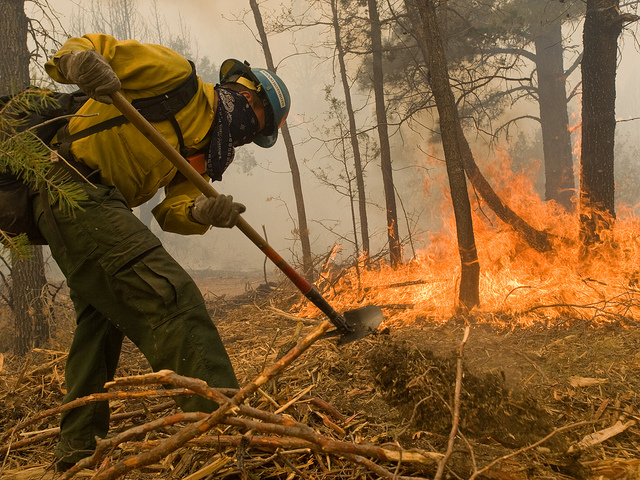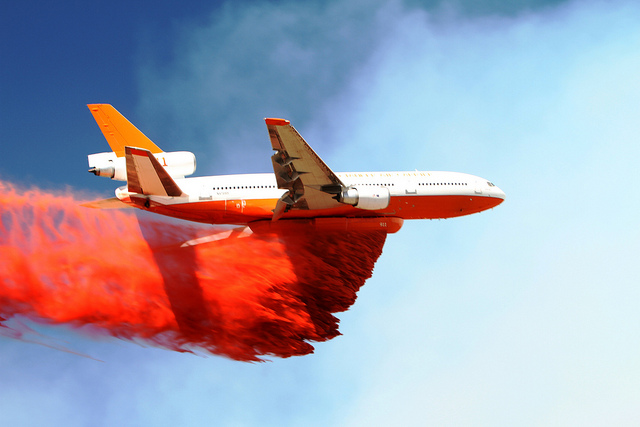
Weather & Wildfire: What Fueled Arizona's Monster

Arizona's Wallow Wildfire has consumed more than 733 square miles (1,898 square kilometers) — an area nearly half the size of Rhode Island — in the space of two weeks.
Although the blaze is now 18 percent contained, the massive burn is now the largest in Arizona state history, thanks to weather conditions that provided the ideal elements to whip up a devastating fire.
"You basically need three ingredients for fires: low humidity, you need winds, and you need abundant fuel," said Ken Waters, the warning coordination meteorologist for the National Weather Service in Phoenix.

Arizona has been in the grip of a drought that has dragged on for more than a decade. Yet even in parched years, occasional rains can spark the growth of grass and underbrush, which then dries out — ideal kindling for fire, Waters said.
However, wildfires crave bigger and better fuel if they're to grow to monster size, said Roger Lamoni, Fire Weather Program manager for the National Weather Service's western region.
"It's like when you build a fire in your fireplace," Lamoni told OurAmazingPlanet. "If you built a fire with dead grass, it would burn very quickly and go out."
And eastern Arizona is chock-full of acre upon acre of extremely dry trees, the ingredient that will keep a fire burning big and hot.
Sign up for the Live Science daily newsletter now
Get the world’s most fascinating discoveries delivered straight to your inbox.
"Some of the standing timber in Arizona is as dry as timber as you would buy in a home improvement store," Lamoni said.
Of course, fires don't start by themselves, Lamoni and Waters said. Weather can be the culprit, courtesy of lightning strikes. However, Arizona's fires appear to be the handiwork of the other common fire-starter — humans.
The most recent reports suggest abandoned campfires caused the Wallow Fire and the smaller Horseshoe Two Fire, which has burned close to 150,000 acres.
Fire clouds
Though they are in many ways caused by weather, large wildfires can also create weather of their own.
If they burn hot enough, the fires kick up particles high into the atmosphere. If conditions are right, water droplets cling to the particles and form storm clouds capable of producing lighting, strong winds and sometimes even rain — through rarely ever enough to help out fire crews battling a blaze below.

In fact, Lamoni said, these strange, wildfire-produced storm clouds, called pyrocumulus, are dangerous.
"You can have very strong winds come back down from that cloud — what we call downbursts — and they can cause very erratic fire behavior. So fire crews will pull back to avoid someone getting hurt," Lamoni said.
Just last week, the Wallow Fire produced a pyrocumulus, but no lightning, Lamoni said.
Dry conditions continue
Wildfires continue to burn in several other states around the country, from Texas to Alaska to Georgia.
Waters said the situation in Arizona is still dangerous, and new fires could start. The dry conditions are expected to continue, and the winds — one of the key ingredients to grow a contained fire into a raging blaze — may pick up this week. However, he said, there are no thunderstorms in the immediate forecast.
"Right now, as far as lighting goes, we're not anticipating anything for the next few days," Waters said. "So it's not up to Mother Nature, it's up to humans."
- Wild Facts About the Arizona Wildfire
- Top 10 Deadliest Natural Disasters in History
- Weirdo Weather: 7 Rare Weather Events
Andrea Mustain is a staff writer for OurAmazingPlanet, a sister site to LiveScience. Reach her at amustain@techmedianetwork.com. Follow her on Twitter @AndreaMustain.









